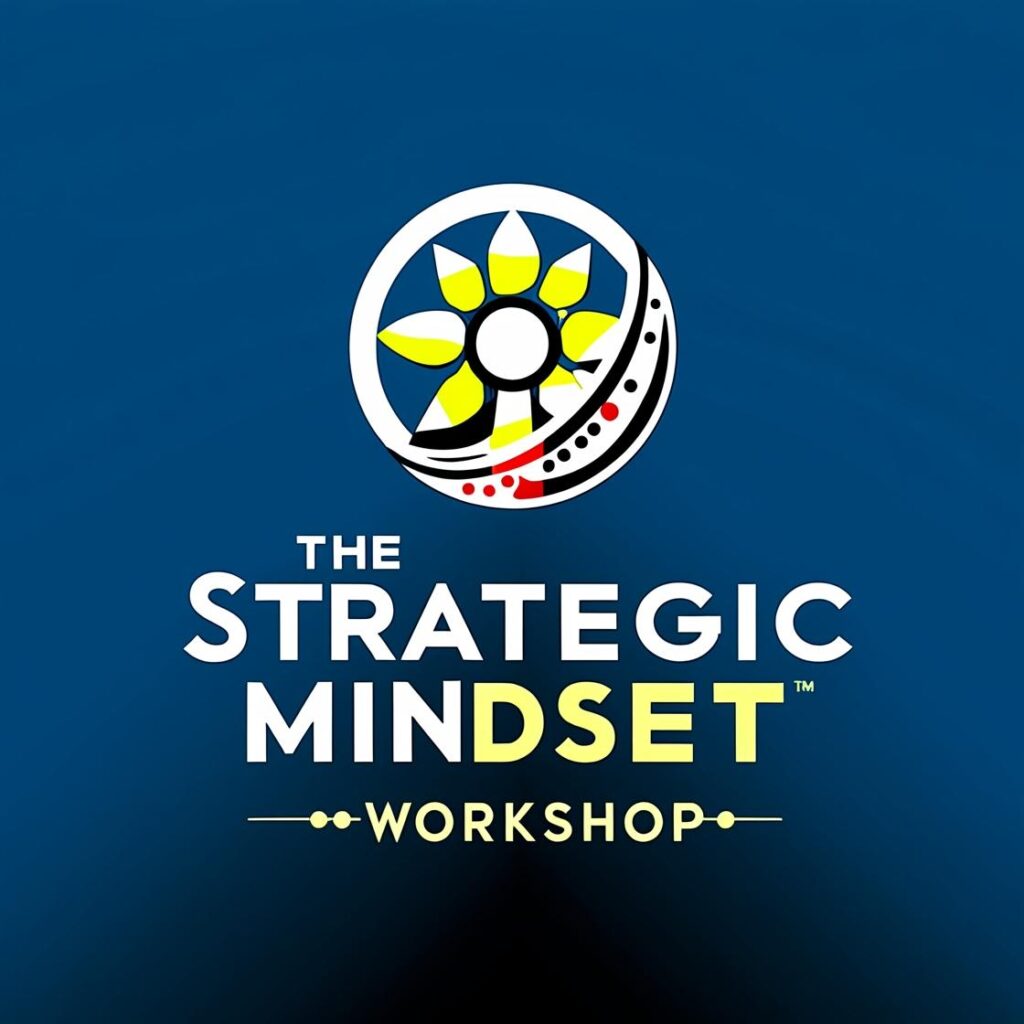Your organisation has a bold plan.
The board approved it. The budget is set. The vision looks sharp on slides. Everyone nods in agreement.
But months later, the numbers don’t move. Projects get delayed. People lose energy. The strategy that looked so strong on paper is stuck in meetings.
Why?
Because strategies don’t fail in the boardroom. They fail on the ground—when leaders are not ready to carry them.
A newly promoted manager hesitates to decide. A supervisor avoids conflict. A team leader micromanages instead of guiding. Employees feel confused, disengaged, and frustrated. The strategy loses steam not because it is wrong, but because leaders aren’t trained to make it real.
Without strong leaders, strategy stalls.
Leadership training is not a nice-to-have. It is the bridge between vision and execution. It is how you turn words into action, and action into results.
Done well, leadership training builds the three shifts every strategy needs: mindset, behavior, and culture. It transforms managers into leaders who can move people, multiply clarity, and carry your strategy forward.
The question is not, “Can we afford leadership training?” The real question is, “Can we afford a strategy without it?”
What Leadership Training Really Is (and Isn’t)
When most people hear leadership training, they imagine a seminar with slides, a hotel ballroom, and a speaker talking for hours. Some managers leave inspired, but a week later, nothing has changed. The problems remain.
That’s not real leadership training.
Real leadership training is not about giving information. It is about creating shifts—in mindset, in behavior, and in culture. It equips leaders with tools they can use tomorrow, not theories they’ll forget by Monday.
I’ve seen this difference first-hand. For more than 20 years, I’ve worked with leaders in government offices, schools, and companies all over the Philippines—from Metro Manila to Laguna, Batangas, Cavite, Pampanga, and beyond. I’ve facilitated workshops for executives in boardrooms, for supervisors in factories, and for teachers in classrooms. And the same truth shows up again and again:
👉 When leaders only hear new ideas, nothing changes. But when they practice new tools, the whole organisation shifts.
This is why I don’t design “talk-and-go” seminars. I design experiences that deliver results. In one company, team leaders who once dreaded Monday meetings learned a simple huddle format that cut wasted time in half. In another, a culture of blame turned into a culture of ownership—because leaders had practical tools to model accountability.
Here’s the key distinction:
| Leadership Training Is Not… | Leadership Training Is… |
|---|---|
| A one-time lecture | A system of shifts that multiply over time |
| Inspiration without follow-through | Tools leaders use daily |
| An HR expense | A people strategy that drives execution |
Leadership training is not a cost. It is a strategy investment. It makes sure that your vision is carried out in the way people think, act, and work together.
The 3 Shifts That Multiply Strategy
Every organisation has a strategy. But only those with trained leaders can carry that strategy from paper to practice.
Leadership training works because it creates three essential shifts: mindset, behavior, and culture. These are not abstract concepts—they are daily realities that shape how people think, act, and work together.
1. Mindset Shift
Many first-time managers see themselves as “the boss.” They give orders, check outputs, and try to prove authority. This mindset slows everything down.
In training, we help leaders see themselves not as taskmasters, but as builders of people and strategy movers. Once this mindset changes, everything else follows.
I remember a newly promoted supervisor from a logistics company in Laguna. At first, he doubted himself. He avoided tough conversations and relied on his senior staff to “carry” the team. After a leadership training we ran, he discovered tools to clarify expectations and ask better questions. A few months later, his team was delivering ahead of deadlines. He didn’t just gain skills—he gained a new identity as a leader.
👉 Mindset shapes leadership. Leadership shapes results.
2. Behavior Shift
Mindset alone isn’t enough. Leaders must change how they behave in meetings, conversations, and decisions. Training provides them with tools they can use immediately.
In one government agency, managers told me they spent hours in meetings but left without clear decisions. During training, we introduced a 15-minute huddle format with three simple steps: clarify goals, assign next actions, confirm deadlines. Within weeks, their staff reported shorter meetings, faster execution, and fewer conflicts.
The shift wasn’t knowledge—it was behavior. Leaders stopped talking about alignment and started practicing it.
👉 When behavior shifts, performance multiplies.
3. Culture Shift
The most powerful shift happens when leaders model behaviors long enough for them to spread. This is how culture changes.
I’ve seen organisations where blame was normal. People hid mistakes and pointed fingers. After leadership training focused on accountability rituals—like weekly “what I own” check-ins—managers began taking responsibility first. Soon, staff followed. The culture shifted from fear to ownership.
In another company, introducing a 7-second emotional check-in during meetings helped teams build trust. Leaders showed vulnerability, and it spread like fire. The culture became more open, and collaboration improved.
👉 Culture is just repeated leadership behavior. Training makes that repetition intentional.
Here’s how the three shifts carry strategy forward:
| Without Training | With Leadership Training |
|---|---|
| Leaders see themselves as bosses | Leaders see themselves as builders |
| Meetings drag without clarity | Meetings create quick decisions |
| Culture of blame | Culture of ownership |
| Strategy stuck on paper | Strategy lived in daily actions |
This is why leadership training is not just an HR program. It is a people strategy—the way you make sure that your organisational strategy is realised through mindset, behavior, and culture.
What Happens When You Skip Leadership Training
Every organisation invests in strategy. But when leaders are unprepared, even the best plans collapse.
Here’s what I’ve seen again and again:
- Strategy stalls. Leaders don’t know how to translate vision into action. Plans stay in slide decks, while teams wait for direction.
- Ningas cogon leadership. At the start, energy is high. Then enthusiasm fades. Without training, leaders lose focus, and people follow their lead.
- High turnover and disengagement. Talented employees leave when managers can’t inspire or support them. The cost of replacing one employee is often higher than the cost of training a leader.
- Micromanagement and burnout. Untrained leaders cling to control. They watch every detail, slowing execution and draining morale.
- Culture decay. Blame spreads. Meetings drag. Conflicts go unresolved. Soon, the organisation loses credibility—not just inside, but with clients and partners.
Let me give you an example.
A retail company once asked me to help with their customer service team. Sales were dropping, and they believed the problem was frontline staff. But after a closer look, the real issue was leadership. Supervisors avoided hard conversations, failed to set clear standards, and relied on quick fixes. Staff copied these patterns. The result: missed sales, unhappy customers, and a culture of excuses.
They had invested millions in marketing, but without trained leaders, execution crumbled.
The lesson was clear: if you skip leadership training, you pay for it many times over—through lost talent, lost time, and lost trust.
The Contrast at a Glance
| Without Leadership Training | With Leadership Training |
|---|---|
| Strategy stuck in documents | Strategy translated into action |
| Short-lived enthusiasm (ningas cogon) | Sustained momentum and follow-through |
| High turnover, disengaged staff | Retention, engagement, and ownership |
| Micromanagement & burnout | Empowered teams & innovation |
| Culture of blame | Culture of accountability |
Skipping leadership training may look like saving money. But in reality, it’s the fastest way to waste your strategy.
Leadership Training as People Strategy
Most organisations talk about strategy in terms of markets, products, and technology. But here’s the truth: no strategy works without people who can carry it.
This is why leadership training is not an HR expense. It is people strategy in action.
Think of it this way.
- Your business strategy defines where you want to go.
- Your people strategy makes sure you have the leaders who can take you there.
When leaders are untrained, strategy stays locked in documents. But when leaders are trained, they become multipliers of clarity and execution.
I’ve seen this across industries. In a government office, leadership training gave supervisors the courage to make faster decisions. In a school system, principals learned to engage teachers instead of issuing orders—and student performance improved. In a hospitality group, team leaders practiced ownership rituals that turned staff from passive workers into proactive problem solvers.
👉 Strategy moves only as fast as your leaders grow.
How This Connects to the Bigger Picture
This principle is at the core of my books and playbooks:
- Wisdom That Works → Training isn’t about what leaders know. It’s about what they use.
- Culture That Sticks → One-off programs fade. Culture is built when leaders repeat the right behaviors until they spread.
- The Thousandfold Way → Small shifts in leadership—done daily—multiply into big transformations for the whole organisation.
Together, these remind us that leadership training is not an event. It is a shift engine. It aligns mindset, behavior, and culture with the organisation’s strategy.
When companies invest in leadership training, they’re not just building leaders. They’re building the conditions that allow their strategy to live, breathe, and succeed.
Proof That Training Transforms
It’s easy to treat leadership training as theory. But the real test is this: does it change how leaders lead and how organisations perform?
I’ve seen the proof in the Philippines, across schools, government agencies, and private companies.
Training in Accountability
In one manufacturing company, supervisors often blamed staff when production targets were missed. This created tension and turnover. During a leadership training we ran, they learned practical accountability tools:
- A weekly “I own this” ritual where each leader named one clear result.
- A decision checklist that forced clarity before every meeting ended.
Within three months, the culture shifted. Instead of finger-pointing, leaders took ownership first. Staff followed. The company reported higher retention and faster resolution of production delays.
👉 Accountability starts with leaders—and it spreads.
Training in Agility
A government agency faced sudden policy changes during the pandemic. Leaders felt overwhelmed. Projects froze. In our training sessions, we introduced agile practices:
- Running “15-minute huddles” to quickly reset priorities.
- Using the “stop-start-continue” tool weekly to adapt to shifting demands.
These small but powerful practices gave leaders confidence. Instead of waiting for perfect plans, they learned to act fast, learn, and adjust. Staff felt more secure, because leaders modeled adaptability.
👉 Agility is not about speed alone—it’s about confidence in uncertainty.
Training in Creative Leadership
In a hospitality group, customer feedback revealed that guests valued “moments of magic.” But team leaders only knew how to enforce rules, not design experiences.
We ran a creative leadership workshop, where leaders learned how to:
- Map the customer journey.
- Identify “moments of truth” where service could delight or disappoint.
- Co-create simple rituals with their teams to surprise guests.
After training, leaders empowered their staff to try new ideas. Simple touches—like personalized greetings and surprise snacks—turned into stories guests shared online. Bookings went up.
👉 Creative leadership turns ordinary service into unforgettable experience.
The Bigger Picture
These stories show that leadership training is not abstract. It builds three qualities every organisation needs today:
- Accountability → Leaders who own results, not excuses.
- Agility → Leaders who adapt to change with clarity.
- Creativity → Leaders who design solutions and experiences, not just enforce rules.
When leaders are trained in these skills, strategy doesn’t stall—it accelerates.
And I’ve seen this again and again in my 20+ years of working with leaders across the Philippines: when leaders shift, organisations transform.
Designing Leadership Training That Works
Not all leadership training delivers transformation. Some programs inspire, but nothing changes the next day. Others provide theory, but no tools leaders can use.
So what makes training work?
Over the years, I’ve found four principles that separate forgettable seminars from training that truly transforms:
1. Anchor in Strategy
Leadership training must connect directly to your organisation’s goals.
- If the strategy is growth, leaders need tools for accountability and performance.
- If the strategy is innovation, leaders need tools for creative leadership.
- If the strategy is resilience, leaders need tools for agility and adaptability.
👉 Training is wasted if it doesn’t serve the strategy.
2. Make It Tool-Based, Not Theory-Based
Leaders don’t need more abstract frameworks. They need usable tools.
- A 7-second check-in to open meetings with trust.
- A decision checklist to close meetings with clarity.
- A moment-of-truth map to find customer service breakthroughs.
In training, participants must practice these tools—so they can use them the very next day.
3. Focus on Immediate Application
The best training answers this question: What can I use tomorrow?
- In one agency, managers used their new huddle format the very next morning.
- In a school, principals practiced feedback conversations the same week.
- In a retail group, leaders tested new customer rituals that weekend.
When leaders apply tools fast, they build confidence and momentum.
👉 If leaders can’t play again tomorrow, the training failed.
4. Reinforce Through Culture
One-time events fade. That’s why training must embed habits that become cultural.
- Accountability spreads when leaders model ownership weekly.
- Agility spreads when huddles become a norm.
- Creativity spreads when leaders encourage experiments every month.
Training should not end at the seminar. It must continue in rituals, systems, and culture.
The Training Design Checklist
Before investing in leadership training, ask:
- Does this program connect to our strategy?
- Will leaders learn tools they can use tomorrow?
- Is there space for immediate practice and feedback?
- Are there plans to reinforce habits after the session?
If the answer is “yes” to all four, the training is not just an event. It is a people strategy that drives execution.
VIII. FAQs
Q1: Does leadership training really work?
Yes—when it’s designed for mindset, behavior, and culture and tied to your strategy. At Strategic Learning Consultants, Inc., we don’t do talk-and-go seminars. We teach tools leaders can use tomorrow: 15-minute huddles, decision checklists, 7-second check-ins, and simple creative rituals. Clients across Metro Manila, Laguna, Batangas, Cavite, Bulacan, and Pampanga have used these to cut meeting time, speed up decisions, and lift morale.
Q2: How fast can we see results?
Often within a week—because leaders apply tools right away. In our programs, managers leave with one small action they’ll use in the next meeting, not “someday.”
Q3: What makes SLCI different from other providers?
- People Strategy First: Training serves your strategy (growth, innovation, resilience).
- Tools, Not Theory: Leaders practice usable tools, not just hear ideas.
- Play-Again Design: Everything is built to be used again and again, until it becomes culture.
- Local, Real: 20+ years helping Filipino leaders in schools, LGUs, and companies change how work gets done.
Q4: Is this only for big organisations?
No. SMEs win fast with simple tools. One supervisor using a 15-minute huddle can shift a whole team.
Q5: What topics do you cover?
We focus on the skills that carry strategy: Accountability (own results), Agility (adapt fast), and Creative Leadership (design better solutions and experiences).
Q6: How do we make sure the training sticks?
We help you set rituals (weekly huddles, ownership check-ins, feedback loops), build a simple follow-through plan, and align managers on the same habits. That’s how culture forms.
Q7: What’s the time commitment?
Common formats: half-day, one day, or a short sprint series. Each includes practice, tools, and a 30-day follow-through.
Shift Leaders, Realize Strategy
Your strategy will only move as fast as your leaders grow.
If you want focus, speed, and ownership, start with the three shifts—mindset, behavior, culture—and make leadership training part of your people strategy.
At Strategic Learning Consultants, Inc., we help leaders turn meetings into movement and plans into results. Choose one small shift this month: a better huddle, a cleaner decision, a braver conversation. Then repeat it until it spreads.
Greatness begins with one shift. Start with your leaders. Start now.
About Strategic Learning Consultants, Inc.
Strategic Learning Consultants, Inc. (SLCI) designs practical leadership programs that help organisations execute strategy through accountability, agility, and creative leadership. For 20+ years, we’ve served teams across the Philippines—turning tools into habits and habits into culture.


